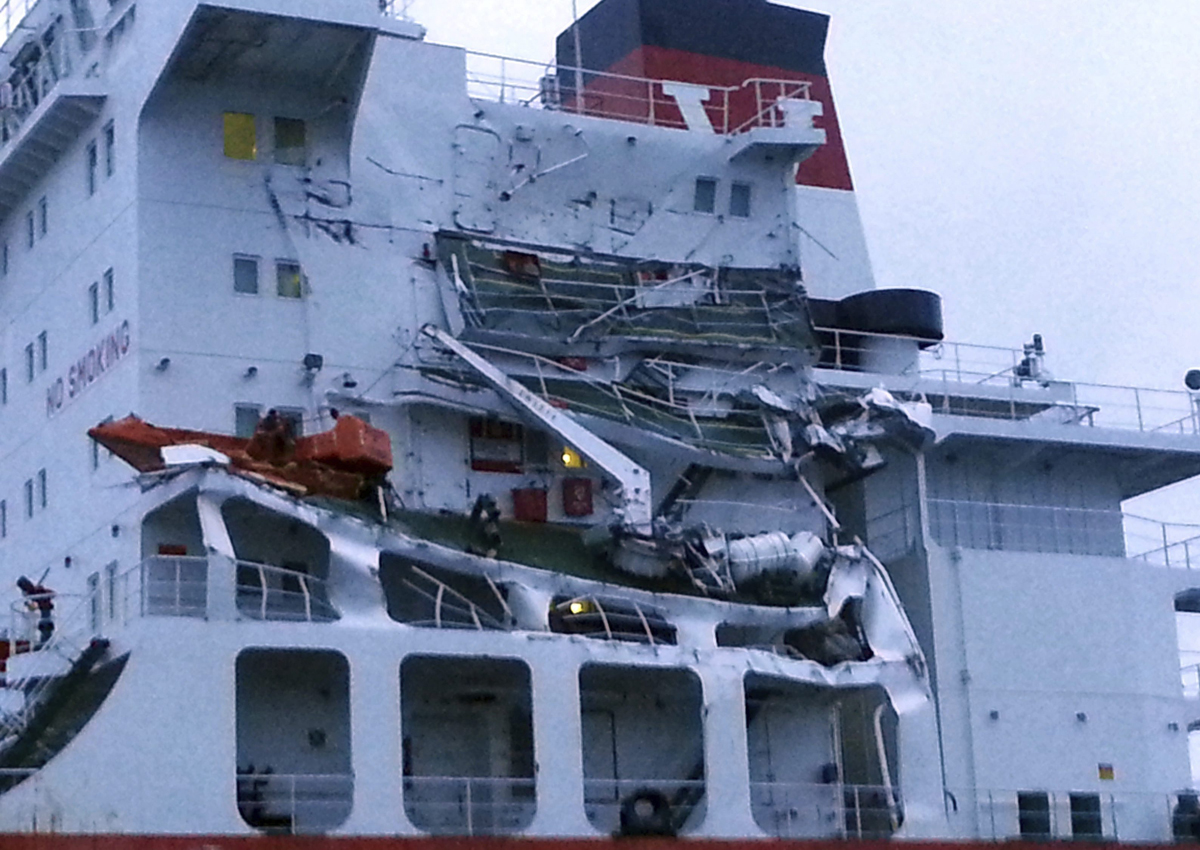PARIS – An oil tanker and a large cargo ship collided Saturday in the Dover Strait between Britain and France but the accident caused no casualties or pollution and both vessels were able to set off again, French authorities said.

The local Maritime Prefecture said the collision between the two Honk Kong-flagged vessels took place overnight 20 miles (32 kilometres) off the northern French port of Dunkirk, in the British zone of the strait between the English Channel and the North Sea, one of the world’s busiest sea routes. It said none of the tanker’s 27 crew members or the 22 on the freighter was injured.
READ MORE: TSB investigating after oil tanker runs aground in Lac Saint-François
The prefecture said the 183-meter (600-foot) Seafrontier tanker, which carries 38,000 tons of gasoline, was able to set off again to the Belgian port of Antwerp after being in a “watched drift” following the collision.
The 224-meter (735-foot) Huayan Endeavour freighter suffered only minor damage in the accident and headed to Dunkirk.
WATCH: Time-lapse video captures massive cargo ship maneuvering into Halifax Harbour

Three French experts were dropped onto the Seafrontier by helicopter a few hours after the collision and assessed that the hull had not suffered substantial damage.
The prefecture said the situation was now under control and “doesn’t pose a risk of pollution or a danger to navigation” in the strait.
The Strait of Dover, a narrow sea passage between southeast England and northern France, is less than 21 miles (34 kilometres) wide at its shortest distance. Up to 25 per cent of the world’s maritime traffic passes through the strait, which often has bad weather, cramped shipping lanes, strong currents, sandbanks and a wide range of tides.



Comments